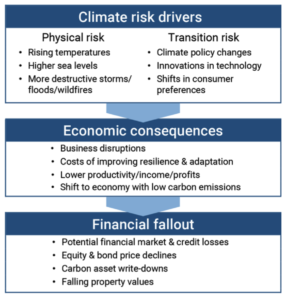What is Corporate Social Responsibility?

Corporate Social Responsibility (CSR) focuses on the social component of the triple bottom line. CSR is a responsibility from business to account for and respond to the needs of their employees, community, and other stakeholders. These stakeholders include employees, customers, suppliers, legislators, and the natural environment, and are the motivation for an organization to integrate CSR into their business strategy.
CSRs are often broken into four categories: environmental impacts, ethical responsibility, philanthropic endeavors, and financial responsibilities. Examples of these include reducing pollution, waste, or emissions, replenishing natural resources used in the manufacture of a product, recycling programs, charitable matching or sponsorship programs, and so on.
While there is the potential for an organization to cause harm in the pursuit of profit, there is just as much potential to do good. CSR is the potential within the social aspect of sustainability that leverages business for good.
“Taking the SMGT 780 Corporate Social Responsibility course helped me to determine my career goals post-graduation. Coming from a business and marketing background, it enabled me to see how much my skill set can make an impact to help corporations and their stakeholders pursue sustainable change together for a better future.” —Erin, Sustainable Management master’s student
SMGT 780 Corporate Social Responsibility is a course in the Master of Science in Sustainable Management and the graduate Certificate in Sustainability and Well-being.
What are the Benefits of CSR?
Adopting CSR as a business strategy has clear benefits for stakeholders and the organization. CSR tools are available to answer the call from stakeholders for stronger CSR efforts, and to drive innovation, minimize risk, and reduce costs.
1. Social License to Operate
An organization’s Social License to Operate (SLO) refers to the approval of an organization’s practices—whether environmental, social, or economic—by stakeholders. An organization’s SLO strengthens as they build trust within their community by walking the talk of their CSR commitments, remaining transparent, and responding appropriately as challenges or opportunities arise.
Introducing the B Corp–B corporation is a type of business certification. Certified B Corps are legally required to consider impacts on all stakeholders including employees, customers, suppliers, community, and the environment. B Lab is the nonprofit organization behind the Certified B Corporation, whose mission is to form a community of business leaders driving a global movement of people using business as a force for good.
Companies that strive to be a “good corporate citizen”, taking into account all stakeholders and evaluating business with a critical eye, also benefit by maintaining a positive brand image. A company might ask themselves: “what would the public think?”, “Is this aligned with our purpose?”, and “Does this help or harm society?” when making decisions.
2. Employee Attraction, Engagement, and Retention
When you consider that “The majority of the U.S. workforce (65%) is not engaged”, according to Gallup’s State of the Global Workplace: 2022 Report, a company that offers employees a sense of purpose may have an edge in attracting the best talent and reducing employee turnover. Gallup also found that profitability, productivity, employee retention, and customer perception are all interrelated. This translates into a win for all involved.
Compensation, benefits, recognition, advancement, and work-life balance are all part of an organization’s strategy to attract, engage, and retain employees. Adopting CSR as a business strategy can be an additional factor in attracting and retaining employees, especially those who are concerned about the social outcomes of their work.
3. Environmental, Social & Governance (ESG) Investing
Investor and shareholder demand is another driver behind the acceleration of CSR. ESG investing is a strategy used to invest in companies that actively practice and integrate CSR through environmental (carbon footprint), social (diversity, equity, and inclusion), and governance (leadership, pay, audits) considerations. When companies act to improve environmental and social factors, overall risk to the company and shareholder investments is minimized, increasing their ESG investing ratings.
Such ESG investing benefits are highlighted in a recent Wall Street Journal article:
- Managed global assets that weigh sustainability factors grew to $40.5 trillion in 2020 from $22.9 trillion in 2016.
- In the U.S., one in three dollars of the more than $50 trillion of assets under professional management is invested in ESG strategies.
A company that appeals to the ESG investor may benefit from increased investment activity, however, they must also be willing to meet the demands of the ESG investor and maintain activities that support environmental and social performance goals.
RELATED: Impact Investing and Sustainability in the Financial Industry
Get Program Guide
Learn more about our 100% online degree and certificate programs.
4. Minimized and Mitigated Risk

A company subjects itself to risk by performing the activities required to do business. Some industries expose themselves to more risk than others, but any business may experience adversity as a result of operating, investing, or financing activities. Sustainability-related risks include supply chain disruption (climate-related, human rights violations, etc.), employee discrimination, non-compliance with natural resource regulations/protections, misappropriation of company funds, and so on.
Organizations are increasingly being held responsible for activities within their own supply chains, such as child and forced labor, equity and discrimination, wages, and the health and safety of employees. By identifying areas of risk, an organization can minimize potential negative financial and social impacts and also identify potential partnerships that strengthen their CSR initiatives and the resiliency of the value chain.
5. Increase in Innovation
CSR is a concept that encourages a business to explore new solutions to traditional challenges. For example, redesigning products and services to meet environmental and/or social standards can create a new or improved product or business model.
Bathroom appliance and plumbing manufacturer, Kohler Company’s WasteLAB, is an example of sustainability driving innovation. WasteLAB uses waste from other areas of the business—pottery dry cull, spent foundry sand, waste glaze, enamel powder, and foundry dust—to create new tile products. Not only does this reveal a new product offering, it also reduces costs of manufacturing waste disposal.
6. Cost Savings and Avoidances
Leading sustainable businesses have proved that better operational efficiency and management of resources can result in significant cost reductions, cost avoidances, and competitive advantages. Since 1994, Dow Chemical Company, a materials science leader, has invested $2 billion in improving energy and water efficiency in manufacturing, which saved the company $9.8 billion. In 2013, GE reduced greenhouse gas emissions by 32 percent and water use by 45 percent, saving $300 million.
The Wall Street Journal reports further on these savings:
- Many Chief Financial Officers (CFOs) said integrating sustainability into their decision making can help reduce operating expenses like the cost of carbon, water, or other raw materials.
- CFOs are seeing the benefits of investing in initiatives that make their businesses more resilient against the effects of climate change, such as droughts and floods.
CSR, the Social Aspect of Sustainability
Corporate Social Responsibility is the potential within the social aspect of sustainability that leverages business for good. Stakeholders, which include employees, customers, suppliers, legislators, and the natural environment, are the key drivers that lead an organization towards integrating CSR into their business strategy. CSR tools are available to organizations and sustainability leaders to not only answer the call from stakeholders for stronger CSR efforts, but to also drive innovation, minimize risk, and reduce costs.
Find Your Future in Sustainable Management
Interested in becoming a sustainability changemaker? In the University of Wisconsin bachelor’s, master’s, and certificate programs in sustainability you’ll learn about the triple bottom line in a flexible, online format that is an ideal choice for students balancing work and personal responsibilities, and offers easy access to academic advising and student support services.
For more information, contact a helpful enrollment adviser at 1-877-895-3276 or learn@uwex.wisconsin.edu.










